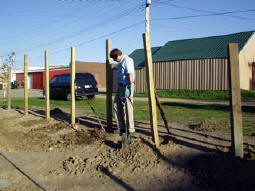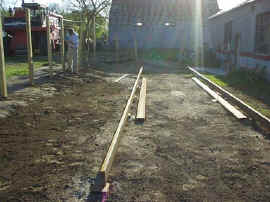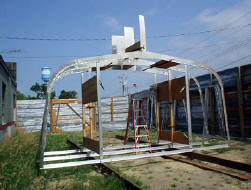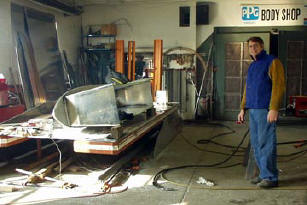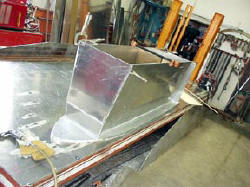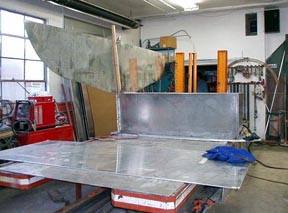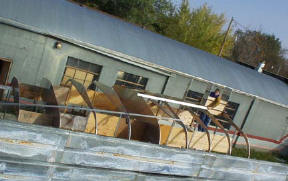In January of 2002, Greg is just getting started on construction. After several months of studying boat design, Greg headed to Lafayette, Louisiana, to pick up 7,000 pounds of a special marine alloy aluminum on Thursday, Jan. 18, 2002. He returned a few days later and was ready to get to work. He estimated that he would need another 6,000 pounds to complete the boat.
Even unloading the heavy sheets of metal took a bit of ingenuity, but Greg’s auto body shop offers him an array of tools and machines to tackle the project. For the next few months, he will be framing the boat’s hull.
Getting started …
Greg started cutting frame pieces in January. In February, he began welding them together. Before the month was done, he already had three frames assembled that represent the front cabin. The solid sheet separates the cabin from the sail locker. Twenty-two of these frames will make up the entire boat. A few feet between each frame and you can begin to see how the sailboat takes shape.
In March work continued on building the frames of the boat’s hull. Research continues on keel configuration. By March 1, more than one-third, nearly one-half, of the frames are constructed. The frames are nearly outgrowing the shop door. Additional frames, because of their increasing width, would have to be walked out of the front overhead door sideways.
In April, Greg scans a few farm auction sales looking for a combine. The diesel engine will be used in the boat along with some hydraulics. At a farm near Lennox and the interstate, Greg finds a 750 Massey Ferguson. He has the high bid and starts the journey home to Springfield. Only 10 miles from the farm, a belt brakes forcing Greg to take the combine into the ditch. The next day, Greg heads back – fixes the combine and travels home at about 16 mph. As one of the farmers at the auction sale said about the machine – “Harold took this combine around the world in his field, now this guy wants to take it around the world again in a boat.”
UPDATE: Greg finds a newer John Deere engine from a trade school, which he marinized.
In May, the frames and hull construction are outgrowing the body shop. A temporary shelter on the shop’s south side breaks the wind for welding. After some confusion and a visit from the police, the city issues $2 building permit for structure.
Tin nailed to several posts enclose the building area. A front gate allows for material/equipment transfer. Rails along the ground hold the frames in place – upside down, while the aluminum is welded to form the hull.
In June, the temporary shelter is complete and the frames are moved outside. Portions of the keel area are visible. At this point in construction, the deck of the boat is facing downward. The rest of the frames will be lined up and secured along the rails in their proper position.
Greg continued work on assembling the frames and standing them up outside in July and August.
Early fall, Greg made another pick up of aluminum in Louisiana just after hurricane Lily pounds the area. More will be needed to complete the deck, mast an miscellaneous. Work was on hold while welding systems were upgraded.
That winter work continued on the lifting keel, rudders, and tying the hull radius as weather permits.
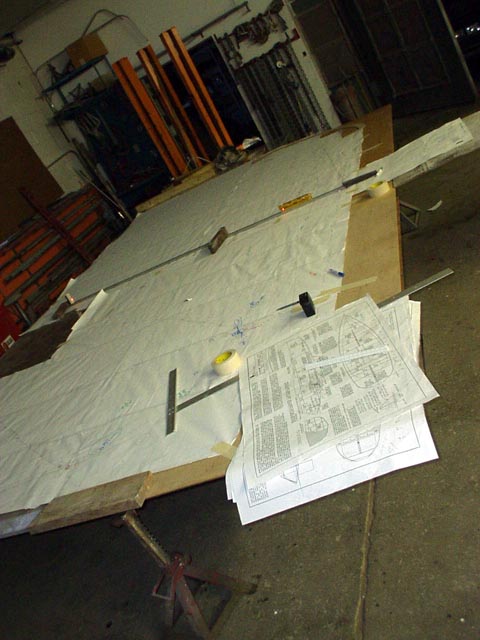

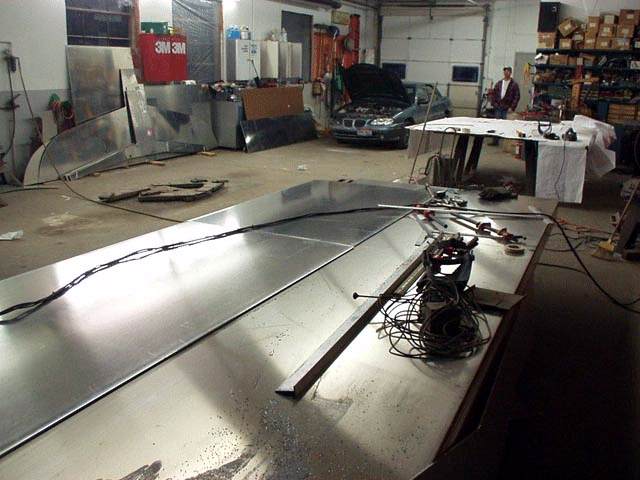
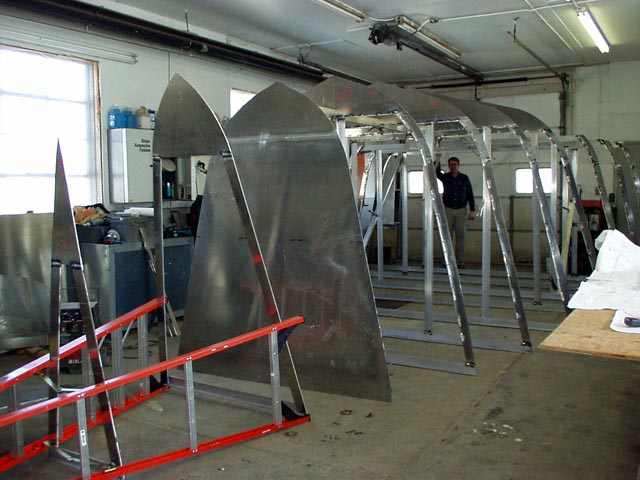
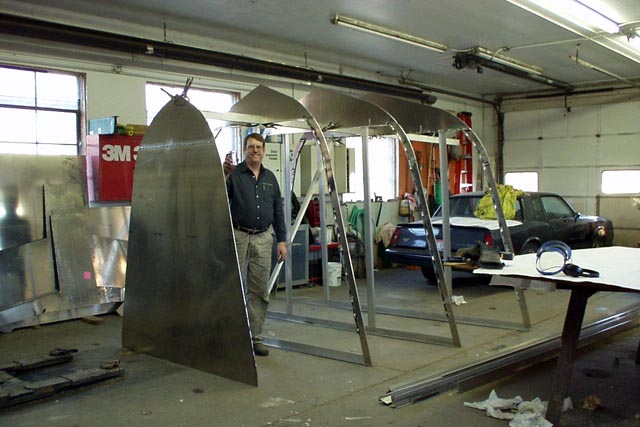
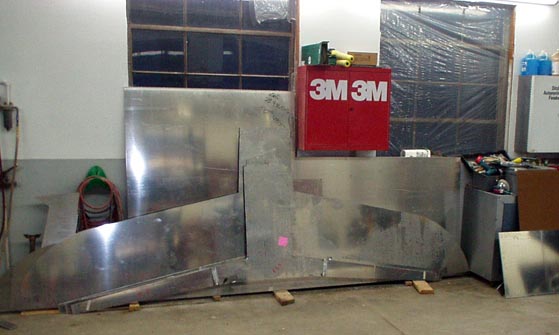
OLYMPUS DIGITAL CAMERA 